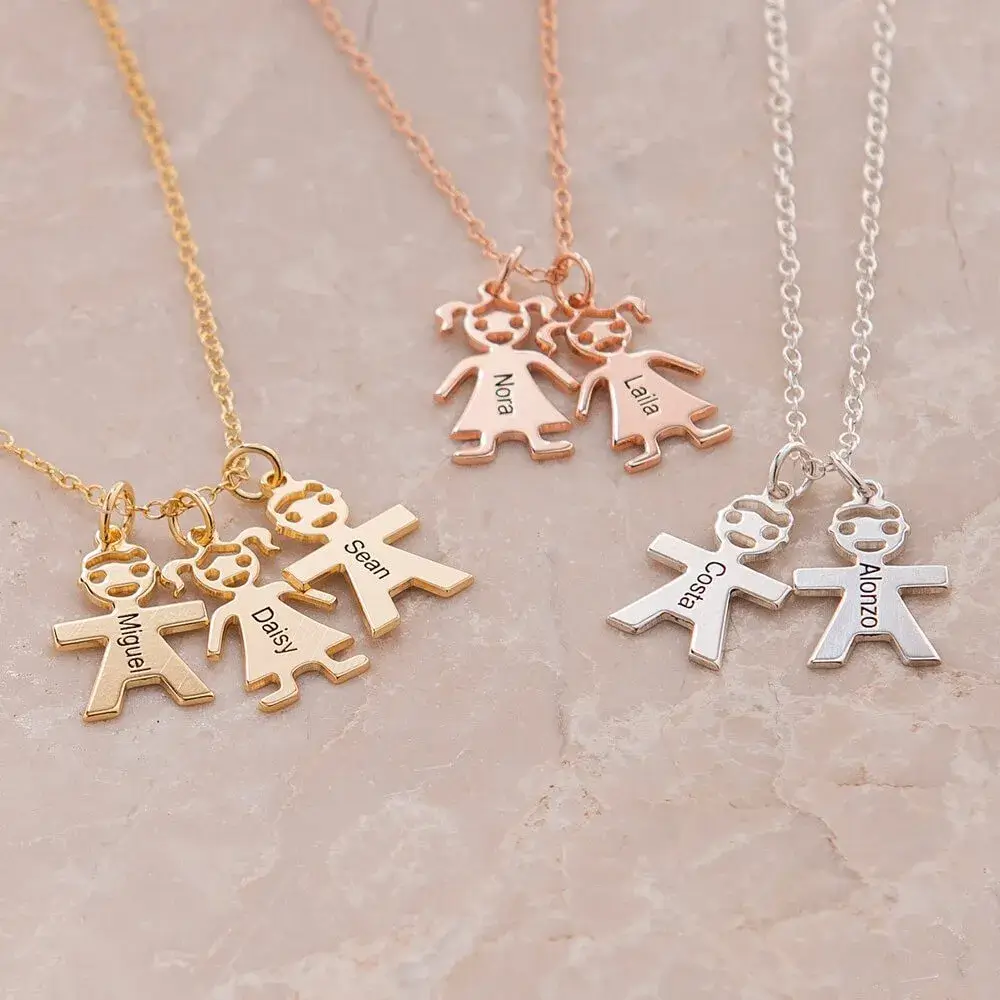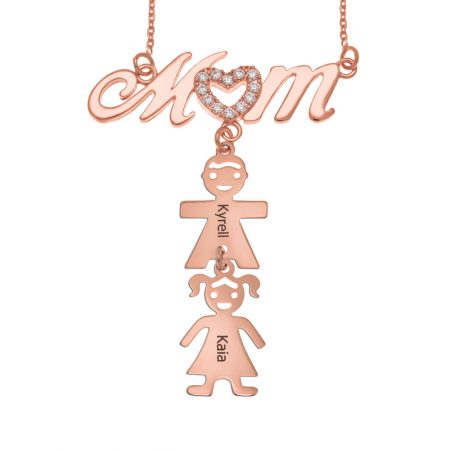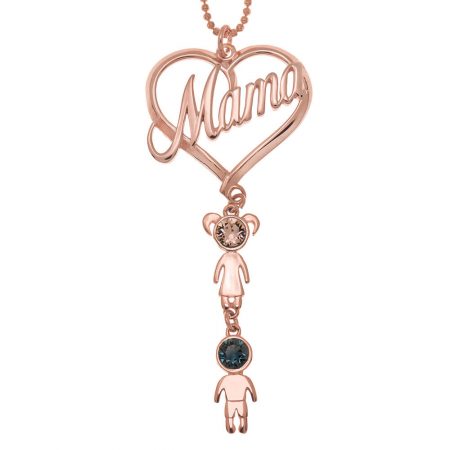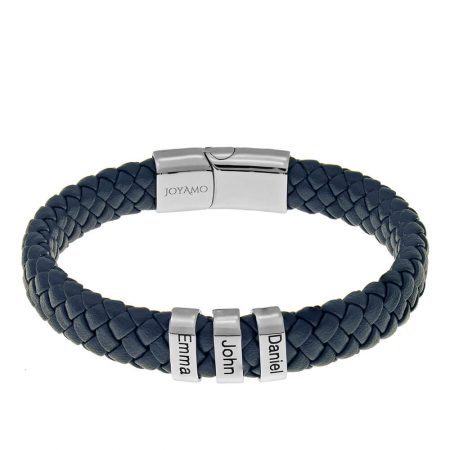In this guide, you will learn about the complexity of gold plated, gold vermeil, gold filled, and solid gold jewelry.
At JoyAmo Jewelry, we believe that by learning the differences between these types of gold and how to conduct authenticity tests, you’ll be empowered to make informed purchases when selecting the perfect piece for your collection.
Gold Plated vs. Solid Gold: Spotting the Differences
Gold plated and solid gold jewelry may appear similar at first sight, but they have very different characteristics that set them apart in structure and price.
Below, you can find an explanation that will help you differentiate between the two:
Gold Plated Jewelry
- Composition: Gold plated jewelry consists of a base metal (such as brass or sterling silver) coated with a thin layer of gold.
- Thickness: The layer of gold plating is typically very thin, ranging from 0.5 to 2.5 microns.
- Durability: Gold plating can wear off over time with regular use and exposure to elements like moisture and chemicals.
- Cost: Gold plated jewelry is more affordable compared to solid gold pieces.
Solid Gold Jewelry
- Composition: Solid gold jewelry is made 100% of gold, without any other metals mixed in (no alloy)
- Purity: Solid gold is measured in karats, with 24k being the purest form (100% gold) and lower karats indicating a mixture of gold and other metals (alloy)
- Durability: Solid gold jewelry is highly durable and resistant to tarnishing or fading with time.
- Cost: Solid gold jewelry tends to be more expensive due to its higher gold content and purity.
Spotting the Differences
| Feature | Gold Plated Jewelry | Solid Gold Jewelry |
|---|---|---|
| Composition | Base metal with a thin layer of gold plating | Pure gold without any other metals mixed in |
| Durability | More expensive due to the higher gold content | Highly durable and long-lasting |
| Cost | More affordable | More expensive due to higher gold content |
Here are some visual tips to help you distinguish between gold plated and solid gold pieces of jewelry:
- Check for hallmark stamps indicating karats on solid gold jewelry.
- Look for signs of wear or fading on gold plated pieces (tarnished), particularly around high-friction areas.
- Consider the weight of the jewelry; solid gold pieces are generally heavier than gold plated ones due to their higher gold content.
If you follow these tips, you can confidently identify if a piece of jewelry is gold plated or solid gold, making informed decisions when purchasing a new piece to add to your collection.
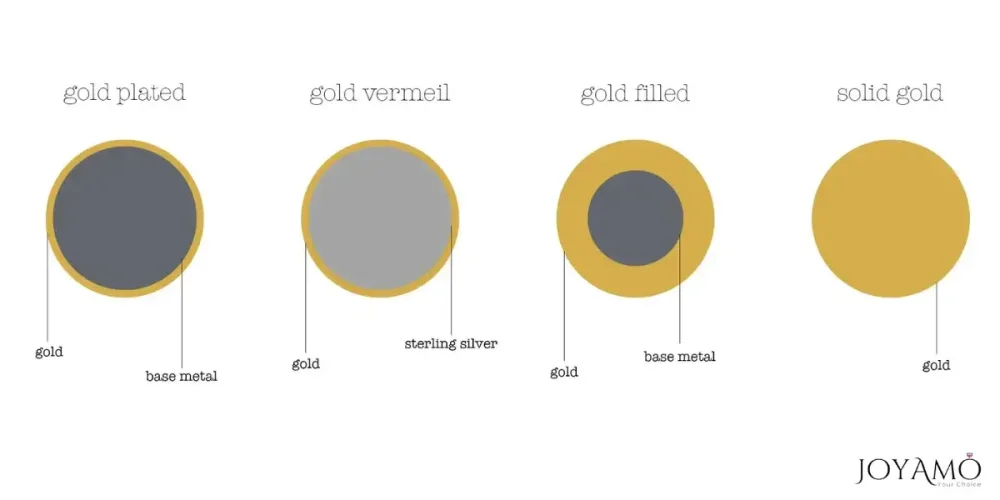
Exploring Gold Plating
In the jewelry world, gold plating is a common technique used to enhance the appearance of jewelry by applying a thin layer of gold to a base metal.
Gold plating, or electroplating, has been used commercially since the 1840s and was refined during the two World Wars.
Take a closer look at the process and characteristics of gold plating:
Defining Gold Plating
- Gold plating involves electroplating or mechanically bonding a layer of gold onto a base metal, such as brass or sterling silver.
- The gold layer adheres to the base metal through a process of chemical bonding or electrochemical deposition.
Thickness of Gold Plating
- The thickness of gold plating can vary, typically ranging from 0.5 to 2.5 microns.
- Thicker plating tends to be more durable and long-lasting, while thinner plating may wear off more quickly with regular use.
Durability of Gold Plating
- While gold plating enhances the aesthetic appeal of jewelry, it may wear off over time, particularly with frequent wear and exposure to moisture or chemicals.
- Factors such as the thickness of the plating, the quality of the base metal, and the wearer’s habits can affect the durability of gold-plated jewelry.
If you are thinking about buying gold plating necklaces or any piece of jewelry in gold plating, it’s essential to understand the limitations and potential for wear over time.
Although gold plating offers a more affordable option for achieving the look of gold, it may require periodic replating to maintain its shiny and lustrous appearance.
Proper care, cleaning, and maintenance, such as avoiding exposure to harsh chemicals, creams, makeup, and perfumes, and storing jewelry properly after usage, can help prolong the lifespan of gold plating bracelets, rings, necklaces, and earrings.
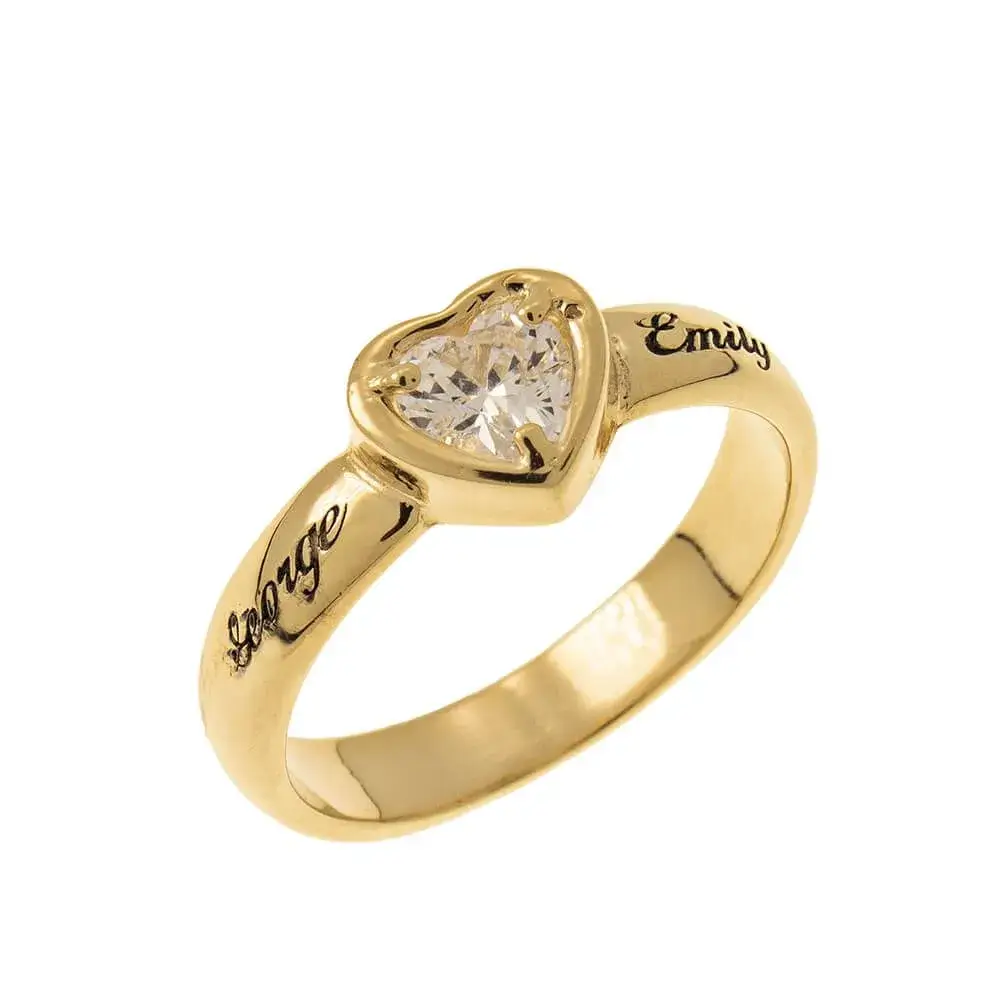
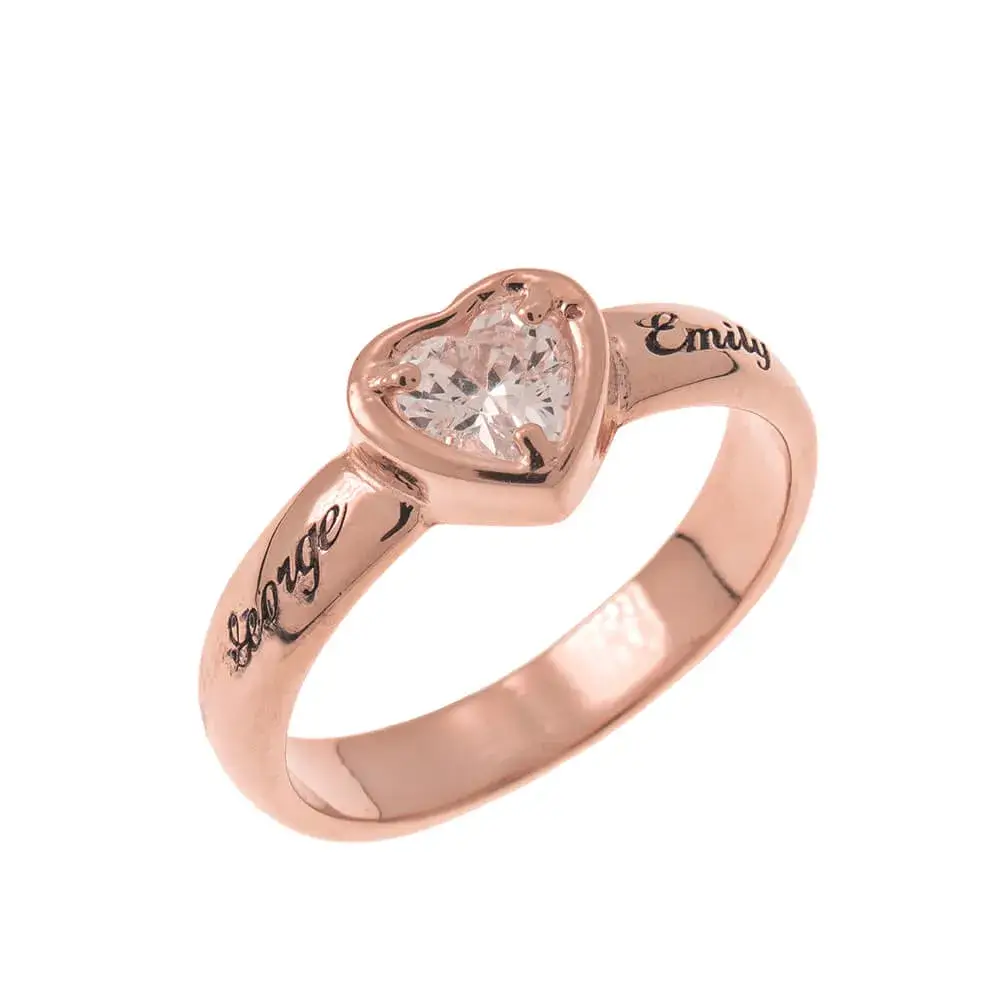
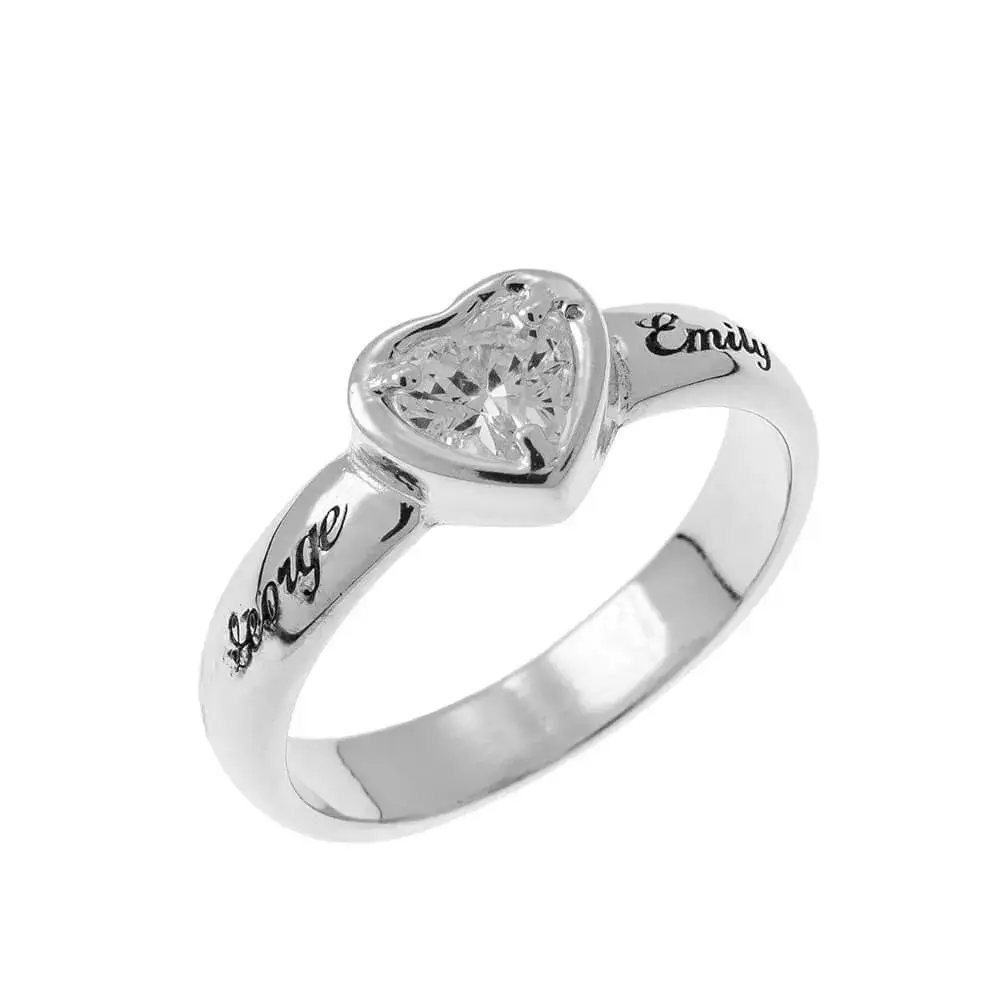
Deciphering Gold Vermeil
Gold vermeil jewelry offers a luxurious and affordable alternative to solid gold pieces.
Below, you can discover the process of creating gold vermeil jewelry and its distinctions from traditional gold plating:
Gold Vermeil Unveiling the Process
- Gold vermeil jewelry is crafted by applying a thick layer of gold to a sterling silver base through a process known as electrolysis or electroplating.
- The layer of gold in gold vermeil jewelry is significantly thicker compared to standard gold plating, typically ranging from 2.5 to 3 microns.
Gold Vermeil Highlighting the Differences
- Composition: Gold vermeil jewelry has a sterling silver base, providing a durable foundation for the gold layer. On the contrary, traditional gold plated jewelry often uses base metals like brass or copper.
- Thickness: The gold layer in gold vermeil jewelry is thicker and more durable than standard gold plating, offering a longer-lasting finish.
- Quality: Gold vermeil jewelry meets stringent quality standards, with the gold layer being of higher purity and thickness compared to traditional gold plated pieces.
- Price: While gold vermeil jewelry may be more expensive than standard gold-plated jewelry, it offers a more affordable option compared to solid gold pieces, making it an attractive choice for those seeking the look of gold without the high price tag.
Get familiar with gold vermeil jewelry so you can make informed decisions when purchasing pieces for your jewelry collection.
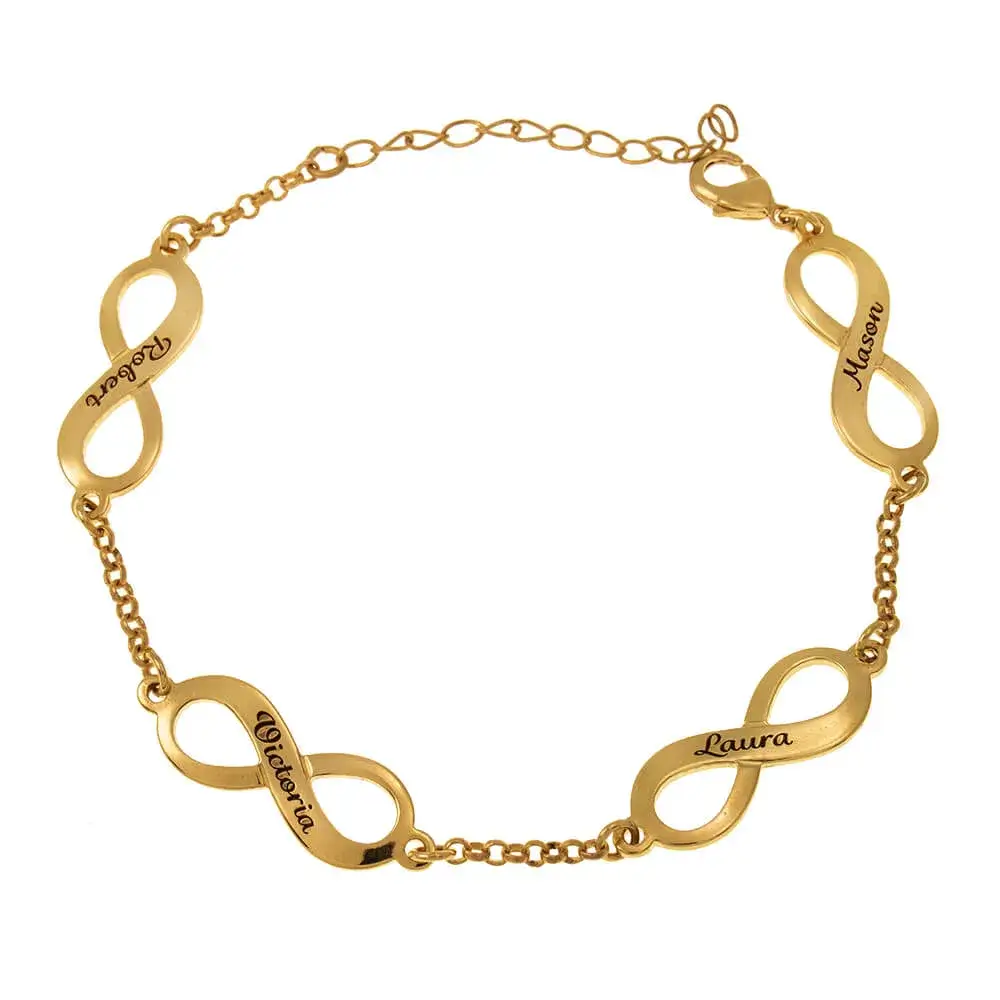
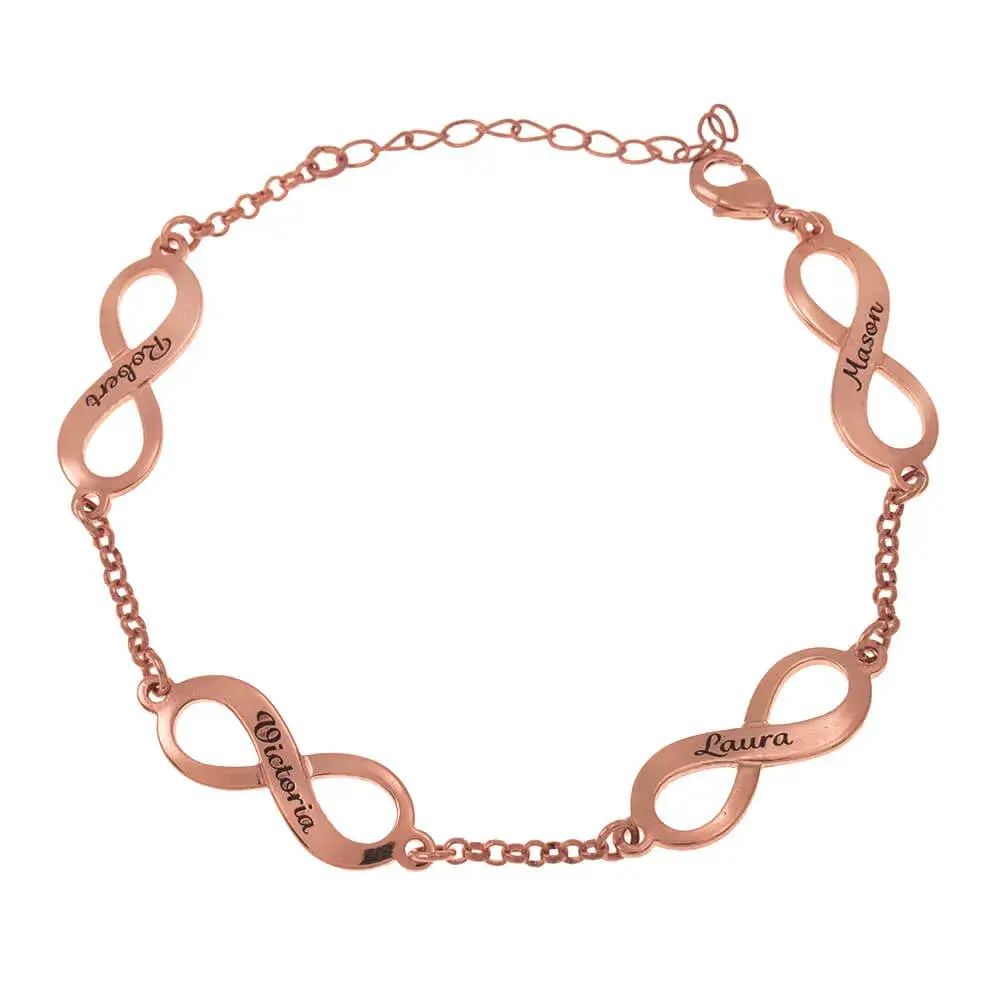
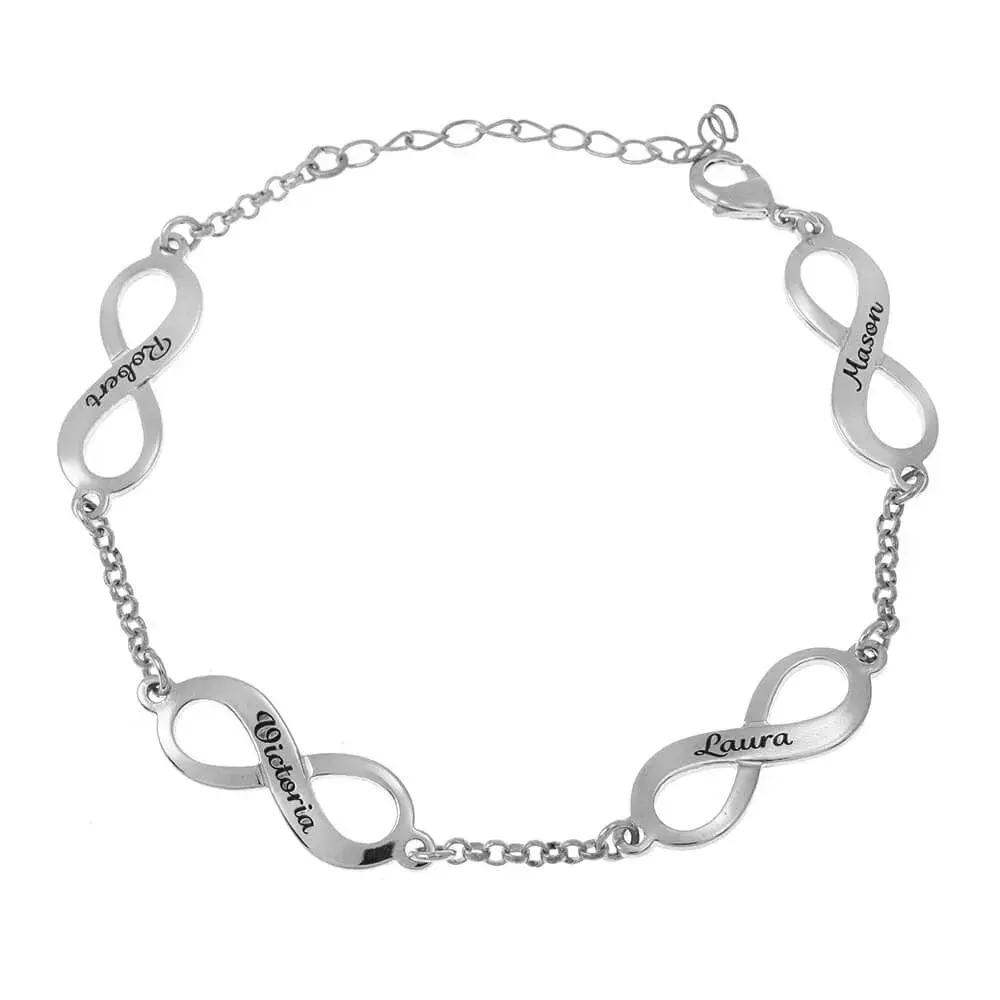
Understanding Gold Filled
Gold filled jewelry offers a durable and affordable alternative to solid gold pieces.
The origins of gold filled jewelry can be traced back to the early 19th century in England when a patented technology was used to make superior quality, semi-precious bespoke jewelry during the Victorian era.
We will explain the concept of gold filled jewelry and its comparisons to solid gold and gold plated pieces:
Explaining the Concept of Gold Filled
- Gold filled jewelry is made by bonding a thick layer of gold onto a base metal, such as brass or copper, through a process called pressure bonding.
- The gold layer in gold filled jewelry is significantly thicker than that of traditional gold plated pieces, typically comprising 5% or 1/20 of the weight of the item.
Composition of Gold Filled
- Gold filled jewelry consists of multiple layers, with the base metal core sandwiched between layers of solid gold.
- The gold layer in gold filled jewelry is bonded to the base metal using heat and pressure, resulting in a durable and long-lasting finish.
Comparisons with Gold Filled
- Solid Gold: Gold filled jewelry contains a higher percentage of gold compared to gold plated pieces, offering greater durability and longevity. However, it is not as pure as solid gold jewelry, which consists entirely of gold without any other metals mixed in.
- Gold Plated: Gold filled jewelry surpasses gold plated pieces in terms of durability and thickness of the gold layer. While gold plated jewelry may wear off over time, gold filled pieces can maintain their appearance for a longer period.
Price and Value of Gold Filled
- Gold filled jewelry provides a cost-effective option for those seeking the look and feel of solid gold without the hefty price tag.
- While gold filled jewelry may be more expensive than gold plated pieces, its superior quality and longevity make it a worthwhile investment for discerning consumers.
Gold filled jewelry allows consumers to make informed decisions when purchasing pieces for their jewelry collection.

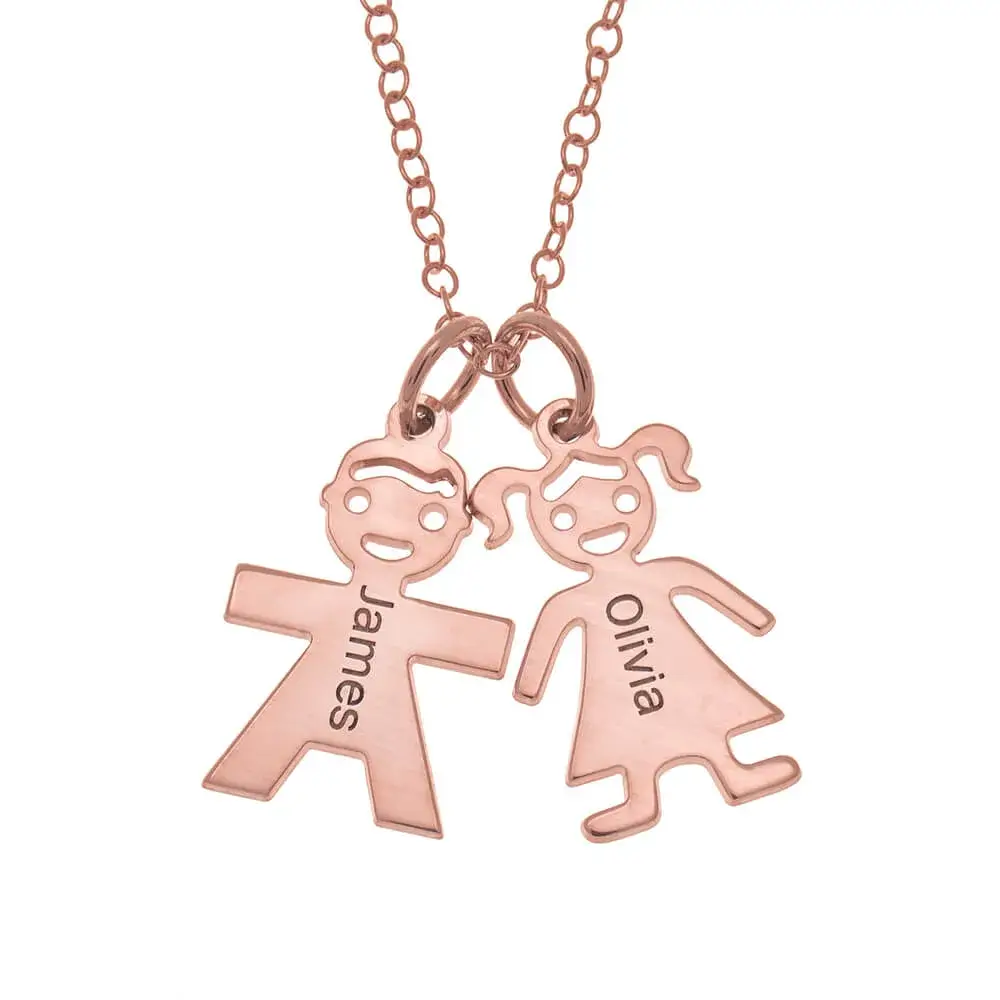

Discovering Solid Gold
Gold is the most malleable of all metals. It is a thick, soft, brilliant, somewhat orange-yellow metal in its pure form. Being ranked second in the reactivity series, it is among the least reactive chemical elements. Under normal circumstances, gold is solid.
Solid gold jewelry is renowned for its timeless elegance and enduring value, but it has also been widely used throughout the world as money, for efficient indirect exchange, and to store wealth.
Here’s an in-depth exploration of solid gold, including its purity levels and the various types of solid gold jewelry available:
Defining Solid Gold
- Solid gold refers to jewelry made entirely of gold, without any other metals mixed in.
- Gold purity is measured in karats (k), with 24k being the purest form of gold, consisting of 100% gold content. However, pure gold is too soft for practical use in jewelry, so it is often alloyed with other metals for strength and durability.
Purity Levels of Solid Gold
- Common purity levels for solid gold jewelry include:
- 24k Gold: Pure gold with a rich, vibrant color and maximum purity.
- 18k Gold: Contains 75% gold and 25% alloy metals, offering a balance of purity and durability.
- 14k Gold: Comprises 58.3% gold and 41.7% alloy metals, providing durability while maintaining a luxurious appearance.
- 10k Gold: Contains 41.7% gold and is the minimum karat considered “solid gold” in the United States.
Exploring Different Types of Solid Gold
- Yellow Gold: The most traditional and classic choice, featuring a warm, golden hue that epitomizes luxury and sophistication.
- White Gold: Created by alloying yellow gold with white metals such as nickel or palladium, resulting in a lustrous silver-colored metal.
- Rose Gold: This was achieved by blending yellow gold with copper, giving it a romantic and feminine pinkish hue.
- Other Variations: Solid gold jewelry may also come in unique variations, such as green gold or black gold, achieved by adding specific alloy metals to the gold base.
If you are looking for the classic beauty of yellow gold, the modern elegance of white gold, or the romantic charm of rose gold, solid gold jewelry offers enduring sophistication for any occasion.
| Type of Solid Gold | Gold Content | Alloy Metals | Characteristics |
|---|---|---|---|
| 24k Gold | 100% | None | Maximum purity, rich color, softness, and malleable |
| 18k Gold | 75% | 25% | High purity, durable, luxurious appearance |
| 14k Gold | 58.3% | 41.7% | Durable, affordable, and maintains gold’s luster |
| 10k Gold | 41.7% | 58.3% | Minimum karats for solid gold, affordable, and durable |
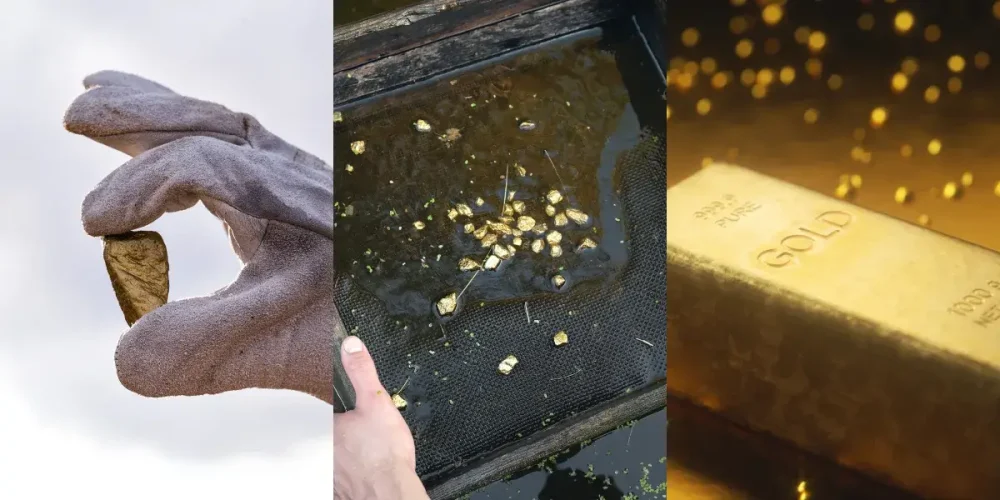
Tests to Determine Authenticity of Solid Gold
Determining the authenticity of gold jewelry is crucial for ensuring value and quality. Several tests can help discern whether a piece is solid gold or plated. Here’s an overview of commonly used methods:
- Acid Testing: This involves applying nitric acid to a small scratch on the jewelry to observe the reaction. Solid gold will not react to the acid, while plated items may reveal the base metal beneath the surface due to the acid dissolving the thin layer of gold plating.
- Magnet Testing: Gold is not magnetic, so a magnet can be used to check for magnetic properties. If the jewelry is attracted to the magnet, it likely contains ferrous metals and is not solid gold.
- Hallmark Examination: Examining any markings or stamps on the jewelry, such as karat stamps or manufacturer’s marks, can provide valuable clues about its authenticity. Authentic solid gold jewelry is typically hallmarked with purity indicators, such as “24k” or “18k.”
| Test Method | Description |
|---|---|
| Acid Testing | Involves applying nitric acid to a small scratch on the jewelry to observe the reaction. Solid gold will not react, while plated items may reveal the base metal beneath the surface. |
| Magnet Testing | Uses a magnet to check for magnetic properties, as gold is not magnetic. Attraction to the magnet suggests the presence of ferrous metals, indicating the jewelry is not solid gold. |
| Hallmark Examination | Examines any markings or stamps on the jewelry, such as karat stamps or manufacturer’s marks. Authentic solid gold jewelry typically bears hallmarks indicating purity, such as “24k” or “18k.” |
These tests offer valuable information that will help you determine if the jewelry is solid gold or plated, helping consumers make informed decisions when purchasing valuable pieces.
You can also consult a professional jeweler for a better assessment of a piece’s authenticity.
💡Is Gold Plated Real Gold FAQs
✔Is gold plated real or fake?
We can say that gold plated jewelry is real, as it has a base metal coated with a thin layer of gold through electroplating (or mechanical bonding processes) While the gold layer is real, it’s essential to recognize that gold plated jewelry contains a smaller amount of gold compared to solid gold pieces, making it more affordable but also less valuable in terms of gold content.
✔ Is gold plated worth anything?
Gold plated jewelry does have value, but not as high as solid gold pieces. The value of gold plated jewelry lies in its aesthetic appeal and affordability, making it accessible to a broader range of consumers. While the gold layer in gold plated jewelry is relatively thin, it still provides the luxurious look and feel of gold without the hefty price tag associated with solid gold pieces.
✔ Is gold plated as good as gold?
Gold plated jewelry offers a similar appearance to solid gold pieces but differs in composition and durability. Gold plated jewelry provides a more affordable option for achieving the look of gold, but it may tarnish with regular use, revealing the base metal beneath. In contrast, solid gold jewelry maintains its appearance and value over time, offering superior durability and longevity.
✔ How long does gold plating last?
The life of gold plating depends on various factors, including the thickness of the gold layer, the quality of the base metal, and how well the jewelry is cared for and maintained. Generally, gold plating can last anywhere from several months to a few years with proper care. It may tarnish quickly with frequent wear, exposure to moisture, and harsh chemicals. You can re-plate the piece of jewelry to maintain its appearance over time.
 SHIPPING
SHIPPING
